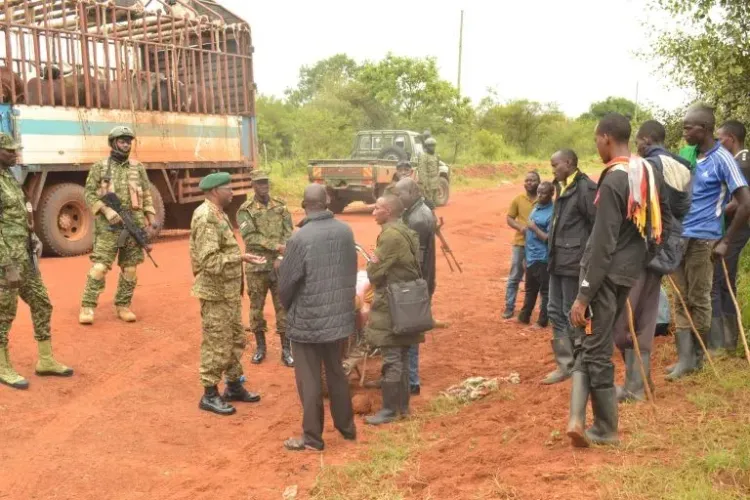Did the Major ADF Base Camp Get Seized in Eastern DRC?

Synopsis
Key Takeaways
- The UPDF captured a significant ADF base camp.
- This operation involved air and artillery strikes.
- The ADF is linked to the Islamic State in Central Africa.
- Joint operations began in November 2021.
- The ADF has a complex history and demographics.
Kampala, July 11 (NationPress) The Uganda Peoples' Defence Forces (UPDF) declared on Friday that they have successfully taken control of a significant military base of a high-ranking commander of the Allied Democratic Forces (ADF) rebels located in the dense jungles of the Democratic Republic of the Congo (DRC).
Chris Magezi, military assistant to Chief of Defence Forces Muhoozi Kainerugaba, shared on his official X account that this operation followed a series of air and artillery strikes, as reported by Xinhua news agency.
“UPDF forces engaged in Operation Shujaa in eastern DRC have overtaken the base camp of ADF leader Musa Baluku in Apakwang, Ituri Province,” Magezi mentioned.
“Following air and artillery assaults last Sunday morning, UPDF troops advanced and captured a large camp that previously housed between 1,000 and 1,500 terrorists and their families. This operation concluded on Thursday,” he elaborated.
The Ugandan military, in collaboration with Congolese forces, initiated joint operations against the ADF beginning in November 2021, shortly after the rebel group executed bomb attacks in Kampala, the capital of Uganda.
The ADF is recognized as an affiliate of the Islamic State in Central Africa, operating as a Ugandan rebel faction deeply rooted in the jungles of eastern DRC. They have been implicated in numerous assaults on local villages.
Originally formed through the merger of several rebel factions, including the Allied Democratic Movement, the National Army for the Liberation of Uganda (NALU), and militant members of the Tablighi Jamaat movement, the ADF has a complex history.
The principal figure of this group was Jamil Mukulu, a former Catholic who converted to Islam. The members predominantly hailed from central Uganda regions such as Iganga, Masaka, and Kampala, and they presented themselves as religious crusaders.
Aside from a loosely articulated religious ideology and claims of government discrimination against Tablighis, the ADF has provided few coherent justifications for their insurgency.
The ADF strategically chose western Uganda for three main reasons: favorable terrain for a rural insurgency, proximity to the DRC for establishing bases and recruiting fighters, and the presence of certain Ugandan ethnic groups that are antagonistic toward the government and could provide support.
Additionally, they received backing from the government of Sudan, which was involved in disputes with the Ugandan government.










